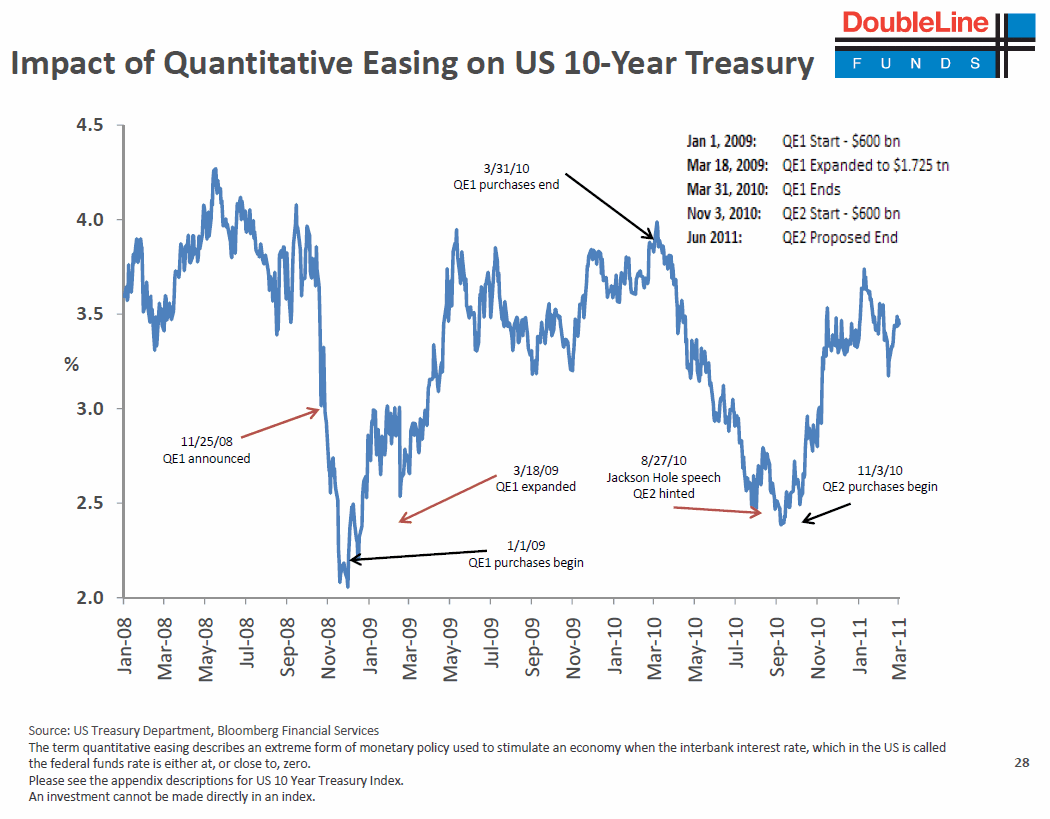<Click on graphic for larger image>
- Fundmastery (blog) – Gundlach, Treasury Bonds & QE II
In a recent presentation, Jeffrey Gundlach, portfolio manager of DoubleLine Total Return Bond Fund presented an interesting chart on U.S. Treasury interest rates and quantitative easing (QE). Gundlach believes QE I and QE II actually contributed to higher rates on 10-Year Treasury Bonds. [The chart above] spells out that relationship: Gundlach is simply pointing out that Fed intervention has distorted the yield on 10-year Treasury securities. Obviously, it has done so also by driving down yields on the short end and the long end. Gundlach only covers the long end in this chart, but we all know how low interest rates are on Treasury bills, money market funds and bank accounts. Why has the Federal Reserve under Chairman Ben Bernanke been doing this?
Comment

So, why is this happening? Why do rates rise when QE is on and fall when QE is off?
We addressed this in our late March conference call:
So how does this help to raise stock prices? Remember that we have talked about this before. POMO – permanent open market operations – occur everyday at 11:00. Everyday at 11:00, the Federal Reserve purchases Treasuries. Everyday at 11:00, a group of Treasuries – say, $6 billion-worth of Treasuries – is converted to cash.
What happens with that cash? The Fed’s portfolio balance theory says that cash will go where it is treated the best. Right now, that is “risk on markets.” Right now, as the Fed converts Treasuries to cash by purchasing them, that money tends to leak out into other places and in other ways in the market. One of the big places that the Fed believes that it goes – and I agree with them – is equities.
There was a story in The Wall Street Journal yesterday and there was a story last week, as well, about what is going to happen to Treasuries when QE2 stops. The assumption in the story is that the Fed is buying Treasuries to push down interest rates, and the Fed is adding to the Treasury market. I think that it is the opposite – that the Fed is engaged in QE2 to get money out of Treasuries and get it into other markets. One of the reasons why yields may have been biased upward is because of QE2. And when it ends, it might have somewhat of a stabilizing force in interest rates.
Let me be clear on my word usage. I said “stabilizing force.” I did not say that, when QE2 ends, rates are going to go down. There is not going to be money being pulled out of Treasuries anymore.